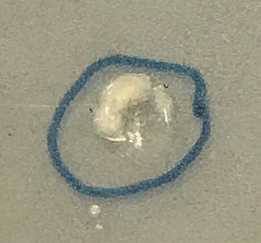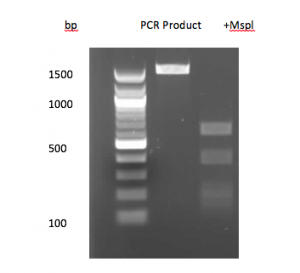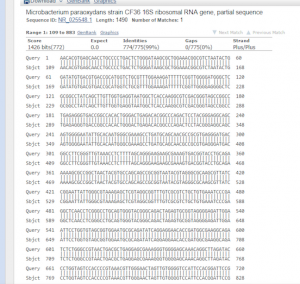Microbacterium paraoxydans is a small, gram-positive, coryneform rod that grows aerobically at 20, 37, and 40 degrees Celsius. It was first isolated from the fish Nile tilapia in Mexico.
References: Alonso-Echanove, J., S. S. Shah, A. J. Valenti, S. N. Dirrigl, L. A. Carson, M. J. Arduino, and W. R. Jarvis. 2001. Nosocomial outbreak of Microbacterium species bacteremia among cancer patients. J. Infect. Dis. 184:754-760. [PubMed]
Date collected: February 9, 2017
Methods for isolation and identification:
- The top surface of the water of Buffalo Creek were collected in a 50 mL collection tube (Figure 1). The sample was taken back for serial dilutions, pipetting, and incubated at room temperature for a week.
- A yellow colony (Figure 2) was selected for the 16s rRNA gene sequencing by PCR amplification.
- The PCR product was digested and sequenced to be able to identify the species of the bacteria.
Results:
- Mspl digestion: The amplification of the PCR production was at 1,500 bp. When digested, fragments at 700 bp, 450 bp, and 200 bp were seen.
Figure 1: Site of Collection

Figure 2: Selected Colony

Figure 3: Results of PCR amplification and MSPL digestion

Sequence Analysis: The sequenced PCR product generated 775 bases of high-quality reads that were helped to use to identify the genus and species of the colony. The NCBI BLAST showed 99% identity with bases 109-883 of the 16s rRNA gene.
Figure 4: NCBI BLAST Analysis of colony

Contributed by: Zack C Long and Rex L Liggon, Bio 250 Spring 2017, Group 11